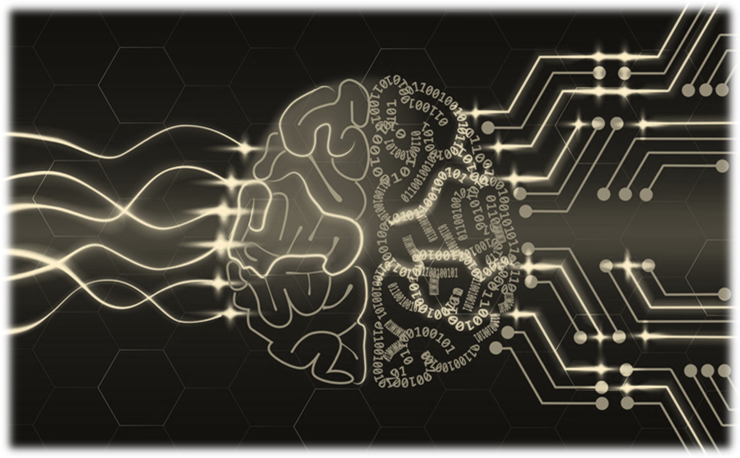- Fall 2019
- 206 Introduction to Discrete Structures II
- Provides the background in combinatorics, probability theory and graph theory required in design and analysis of algorithms, in system analysis, and in other areas of computer science.
Syllabus - To have access to the course material, please login to sakai.
- Spring 2019
-
525/425 Brain-inspired Computing - NEW Course

The course provides an overview of the fundamental concepts and current trends in neuro-mimetic and neuro-inspired Computing with a focus on designing neuromorphic networks for vision and movement.
Course Objectives:
1. To explore how computation in the human brain can be effectively modeled across different levels of abstraction (from a single neuron to neuronal networks and systems)
2. To introduce a computational formalization of brain function based on the model of neuron as a Spike Processing Machine – Spike Neural Networks (SNNs);
3. To employ neuro-mimetic or neuro-inspired SNNs and tackle a CS problem in a term-wide project.
To have access to the course material, please login to sakai.
- Fall 2018
- On sabbatical
- Spring 2018
-
673 Data-driven and Neurorehabilitation Robotics
- To have access to the course material, please login to sakai.
- Fall 2017
-
525/443 Brain-inspired Computing - NEW Course

The course provides an overview of the fundamental concepts and current trends in neuro-mimetic and neuro-inspired Computing with a focus on designing neuromorphic networks for vision and movement.
Course Objectives:
1. To explore how computation in the human brain can be effectively modeled across different levels of abstraction (from a single neuron to neuronal networks and systems)
2. To introduce a computational formalization of brain function based on the model of neuron as a Spike Processing Machine – Spike Neural Networks (SNNs);
3. To employ neuro-mimetic or neuro-inspired SNNs and tackle a CS problem in a term-wide project.
To have access to the course material, please login to sakai.
- Spring 2017
-
525/443 Brain-inspired Computing - NEW Course

The course provides an overview of the fundamental concepts and current trends in neuro-mimetic and neuro-inspired Computing with a focus on designing neuromorphic networks for vision and movement.Course Objectives:
1. To explore how computation in the human brain can be effectively modeled across different levels of abstraction (from a single neuron to neuronal networks and systems)
2. To introduce a computational formalization of brain function based on the model of neuron as a Spike Processing Machine – Spike Neural Networks (SNNs);
3. To employ neuro-mimetic or neuro-inspired SNNs and tackle a CS problem in a term-wide project.
To have access to the course material, please login to sakai.
- Fall 2016
-
107 Computing for Math and the Sciences

This course introduces the student to computers, programming, and some of the key ideas on which the field of computer science is based. The primary vehicle for doing so is the computer language MATLAB. The use of a program like MAPLE to manipulate symbolic equations is also covered.Topics: Structure of Computers, MATLAB basics, Computation and decision-making, Iteration, Recursion, Applications, Efficiency Analysis. MAPLE, Program Proving
To have access to the course material, please login to sakai.
- Spring 2016
-
443/674 Integration of Computer and Brain Sciences

In this course, students have the opportunity to discover, and understand1) how the human brain computes to achieve intelligent behavior and
2) how this knowledge guides the development of new computational algorithms that
- mimic the neural activity
- simulate a brain disease
- harness the learning ability of the brain (neuro-plasticity) and apply therapy
We cover the entire range of computational methods for modeling the brain activity from the micro (neural) to the macro (behavioral) level (without this coverage to be complete or dense).
Course syllabus.
To have access to the course material, please login to sakai.
- Fall 2015
-
443/674 Integration of Computer and Brain Sciences

In this course, students have the opportunity to discover, and understand1) how the human brain computes to achieve intelligent behavior and
2) how this knowledge guides the development of new computational algorithms that
- mimic the neural activity
- simulate a brain disease
- harness the learning ability of the brain (neuro-plasticity) and apply therapy
We cover the entire range of computational methods for modeling the brain activity from the micro (neural) to the macro (behavioral) level (without this coverage to be complete or dense).
Course syllabus.
To have access to the course material, please login to sakai.






